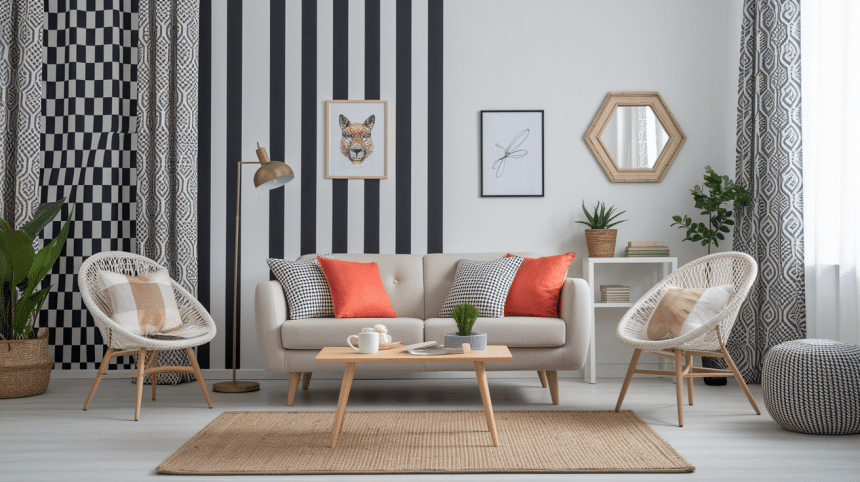Stripes with florals? Plaids with polka dots? The wrong pattern combo can turn your dream room into a visual nightmare faster than you can say “design disaster.”
Patterns bring rooms to life. They add personality and warmth to spaces that would otherwise feel flat or boring. But using patterns can be tricky – too many can make a room feel busy and chaotic.
The good news? You don’t need to be a design expert to use patterns well in your home. With a few simple tips, you can mix and match patterns like a pro.
In this guide, we’ll show you the most popular pattern types, from bold geometrics to subtle textures. You’ll learn smart ways to mix patterns and practical tips for every room in your house.
Get ready to add some pattern power to your space!
What is Pattern in Interior Design?
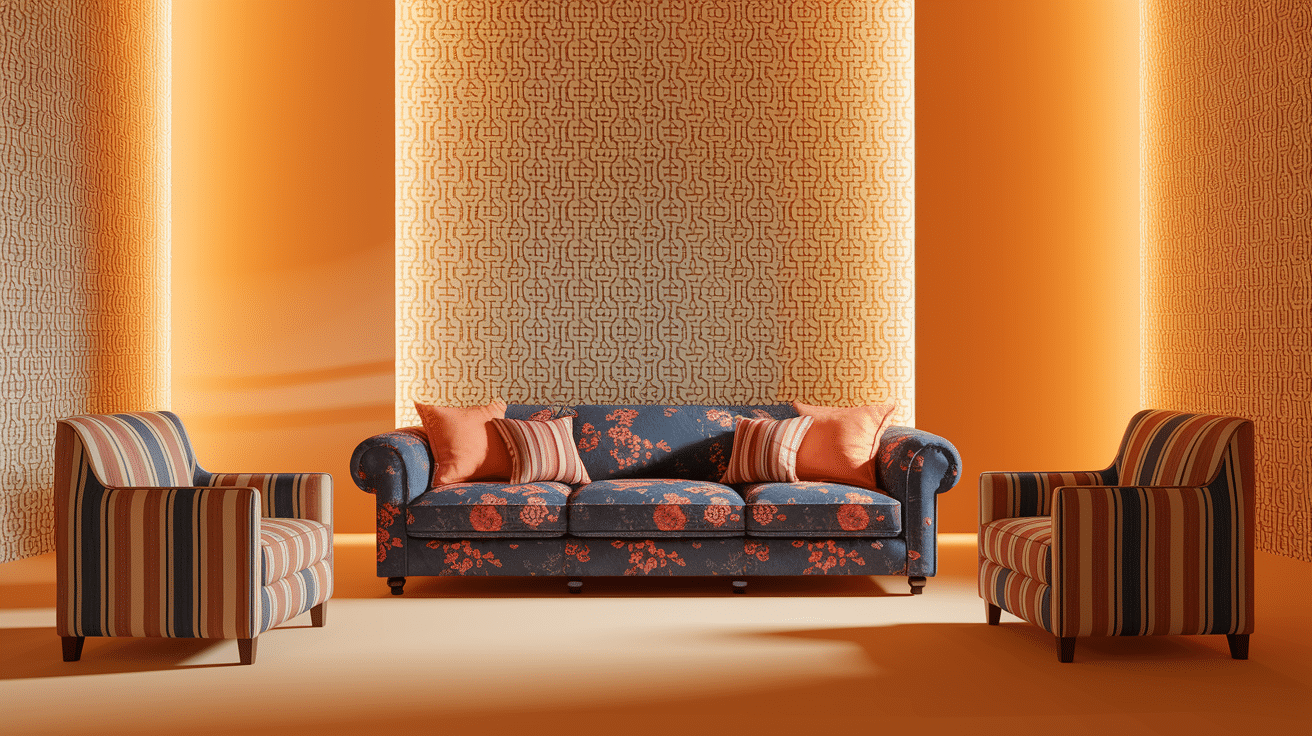
Ever notice how a plain room can feel like an empty canvas? That’s where patterns step in to save the day!
Patterns in interior design are repeated decorative designs that appear on surfaces throughout your home. They show up on wallpaper, furniture, rugs, pillows, curtains, and even tiles.
Think of stripes running across your sofa, flowers blooming on your curtains, or zigzags dancing across your area rug.
Patterns are like the seasoning in your favorite recipe – they add flavor and depth to a space. They create movement that guides your eye around the room. They can make small spaces feel bigger or large rooms feel cozier.
When a room feels “flat” or “boring,” it’s often missing that pattern punch. The right pattern can change a forgettable space into one that makes visitors ask, “Who designed this place?”
The Impact of Patterns in Interior Spaces
Patterns do much more than just fill space—they modify how a room feels and functions.
-
Mood: Patterns can make a room feel cozy and intimate or open and energetic. Soft, curved patterns often create calm, while bold geometrics add energy.
-
Scale: Large patterns make small rooms feel more spacious, while small, detailed patterns can make large rooms feel more intimate.
-
Personality: The patterns you choose tell visitors about who you are. Playful polka dots, elegant damask, or modern geometrics each make a different statement.
-
Balance: Patterns break up solid colors and prevent a room from feeling flat or boring. When used thoughtfully, they create visual balance.
-
Focus: Strategic pattern placement draws attention to your favorite parts of a room or away from areas you’d rather not highlight.
-
Unity: Repeating the same pattern in different places ties a room together, making even eclectic spaces feel cohesive.
-
Depth: Layers of different patterns add richness and dimension that make a space feel complete and well-designed.
Want to learn how patterns can work with other design elements? Read our guide on Unity and Harmony in Interior Design to see how patterns fit into the bigger picture of creating balanced spaces.
And if you’re looking to make a statement, see how patterns can create or enhance a Focal Point in Interior Design to direct attention exactly where you want it.
Different Types of Patterns in Interior Design
The world of interior patterns is rich and diverse, offering something for every taste and style. Here’s a closer look at the patterns that can upgrade your spaces:
Stripes
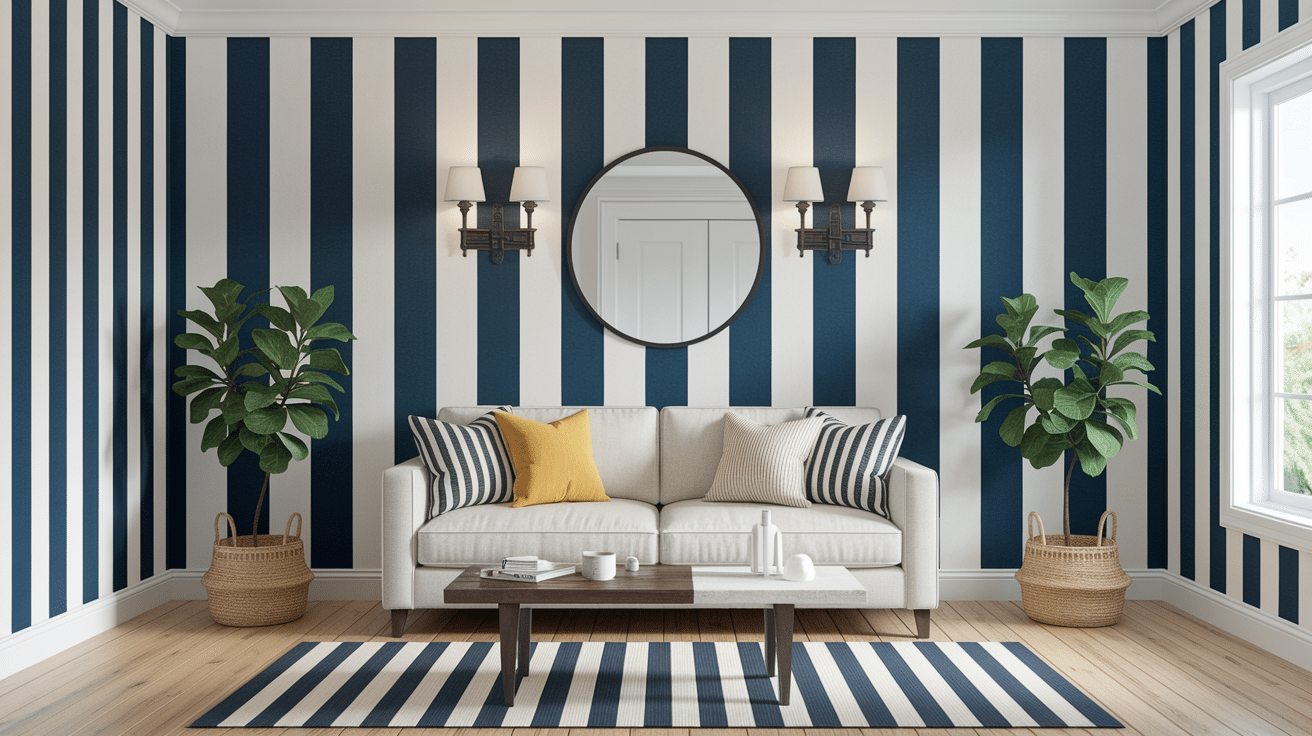
Stripes are the workhorses of interior design patterns. Vertical stripes can make your ceilings appear higher, while horizontal stripes can make narrow rooms feel wider.
They bring a clean, classic look that works in both traditional and modern spaces. From pinstripes to bold bands, stripes can be as subtle or as dramatic as you like, making them one of the most versatile patterns to work with.
Complex Patterns
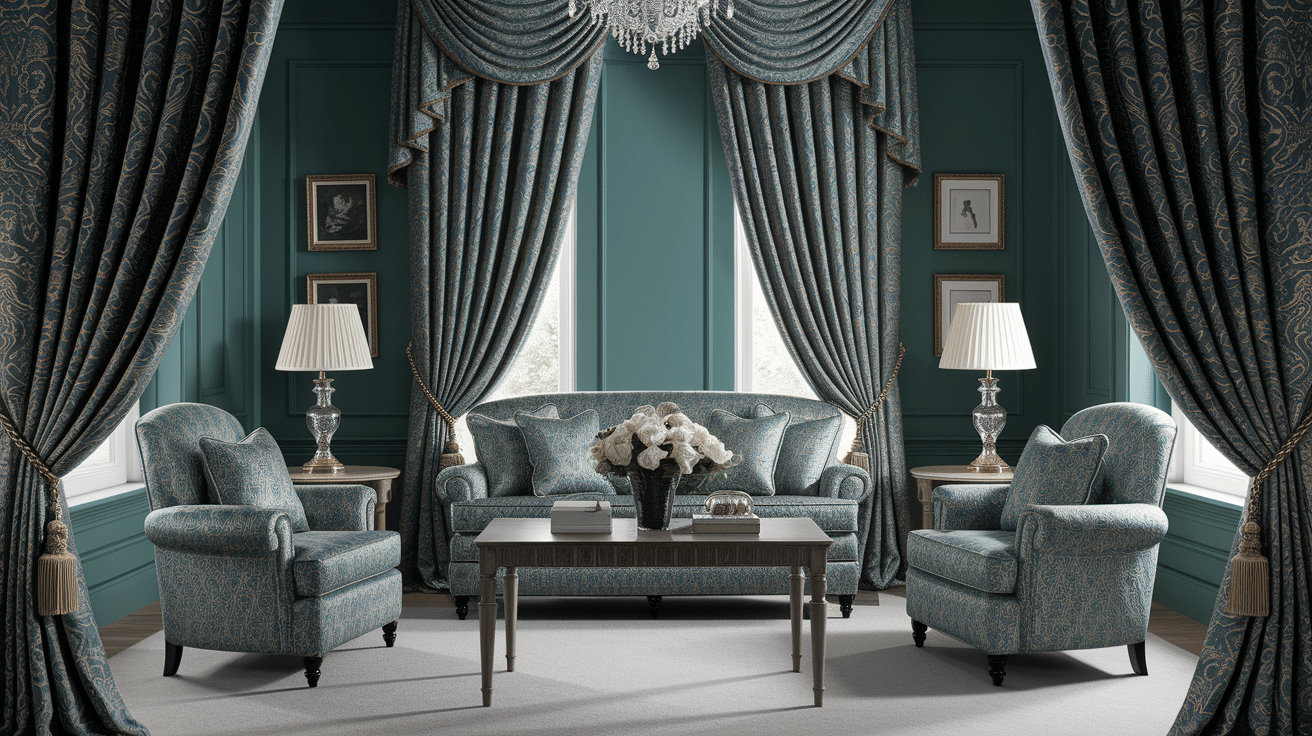
These detailed designs create instant visual interest and often become the star of a room. Think intricate damasks, elaborate paisleys, or detailed toile scenes.
Complex patterns work best when given space to shine—try them on a feature wall, a statement chair, or luxurious drapery. They tell stories and add richness that simpler patterns can’t match.
Geometric Patterns
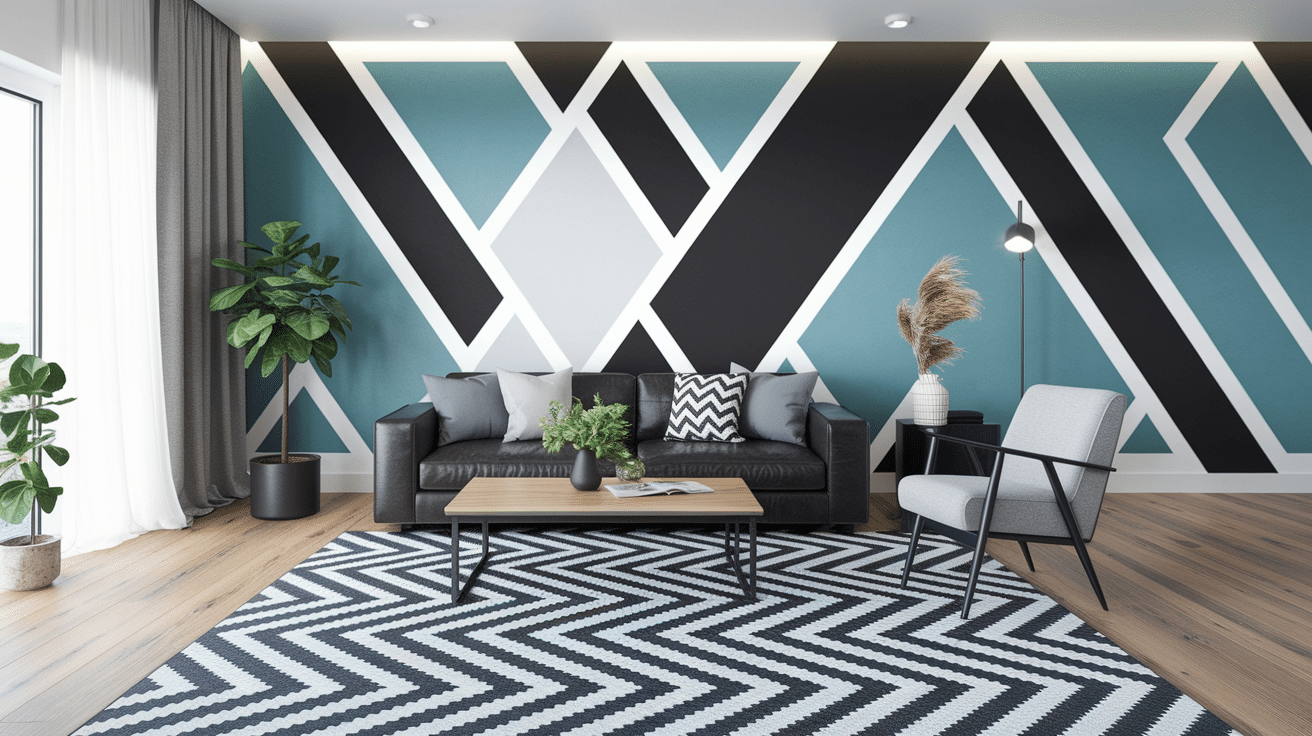
Clean lines, shapes, and angles define geometric patterns. From simple chevrons to complex tessellations, these patterns add structure and modern appeal to any space.
Geometrics work wonderfully in contemporary interiors but can also add an unexpected twist to more traditional rooms. They’re perfect for adding visual energy without the softness of more organic patterns.
Floral Patterns
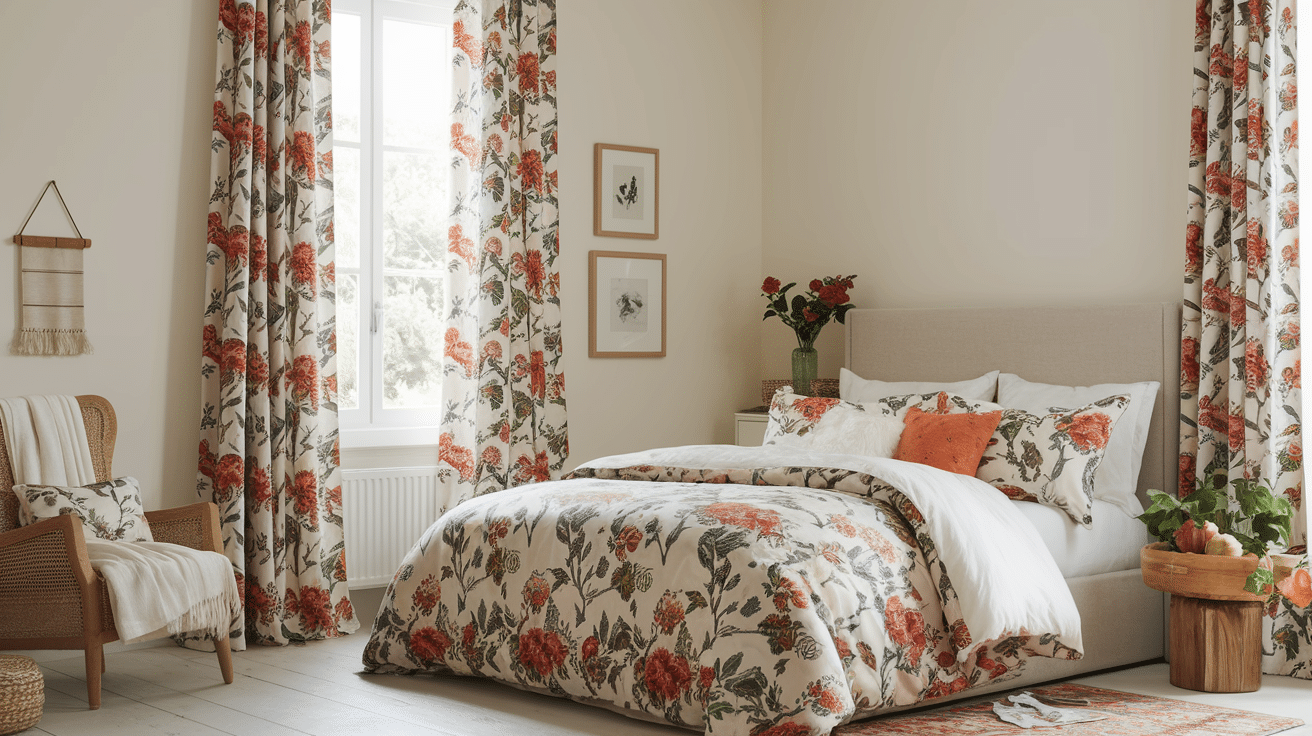
Bringing the outdoors in, floral patterns add life and warmth to interiors. They range from realistic botanical prints to stylized, abstract interpretations of flowers and plants.
Florals can be bold and dramatic or soft and subtle. They work beautifully in living spaces, bedrooms, and anywhere you want to add a touch of nature and timeless charm.
Motif Patterns
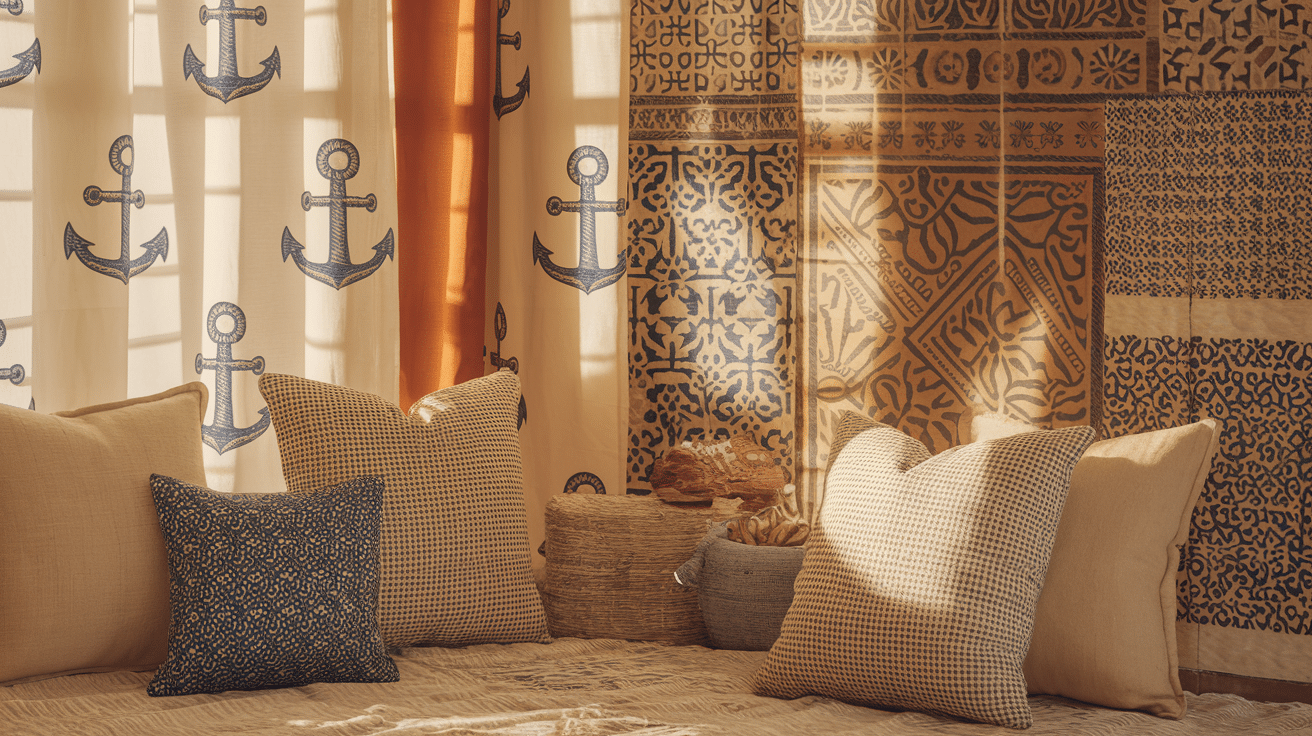
These patterns feature recognizable symbols or designs repeated throughout a fabric or wallpaper. Nautical anchors, Mediterranean tiles, Asian-inspired pagodas, or Art Deco fans are all examples of motifs.
They often carry cultural significance or tell a story, adding depth and personality to your decor while reflecting your interests or heritage.
Animal Patterns
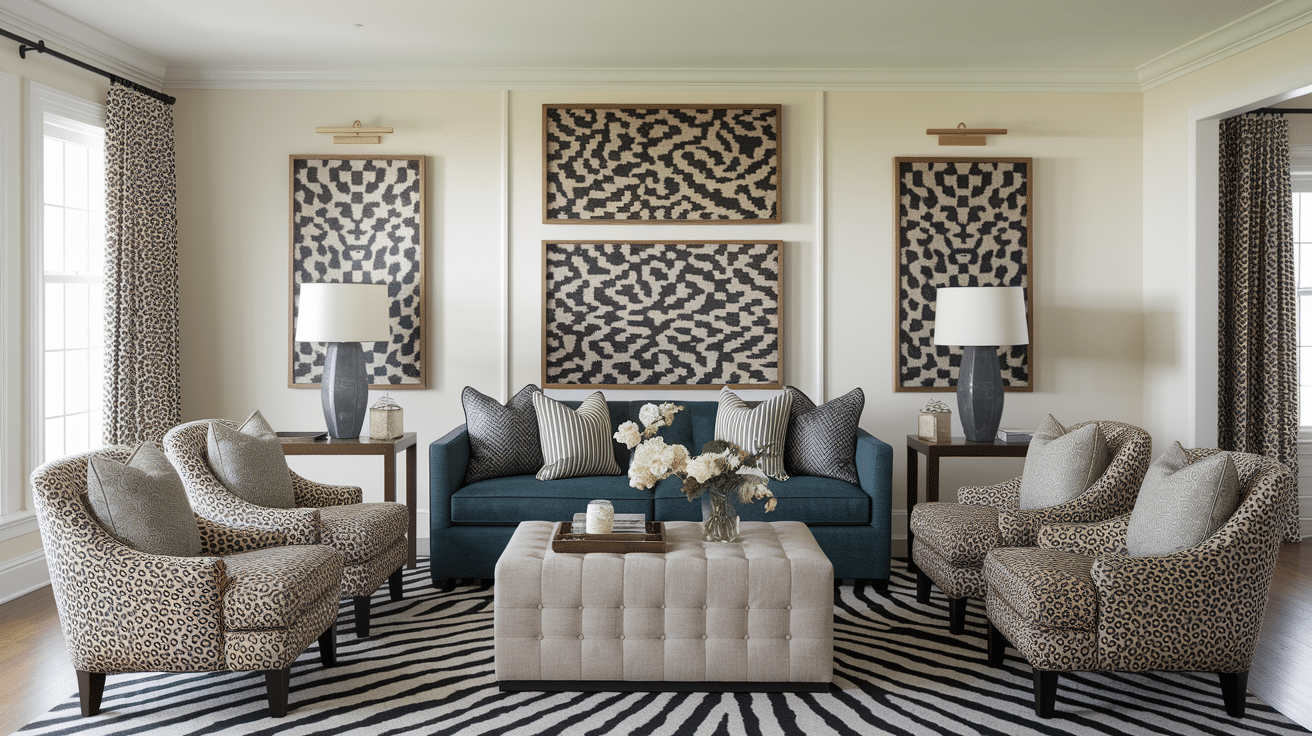
From sophisticated leopard spots to playful zebra stripes, animal patterns add an exotic touch and natural texture to any space.
They work surprisingly well as neutrals when used in their natural colorways, or they can make bold statements in unexpected colors. Even small doses of animal patterns can add warmth and a touch of the wild to the most civilized spaces.
Top Tips for Incorporating Patterns in Your Home
Here’s how to add patterns to your home without creating chaos:
Mix Pattern Sizes: Combine large, medium, and small patterns to create balance. Big florals work well with tiny stripes.
Use the 60-30-10 Rule: Use your main pattern for 60% of the room, your second pattern for 30%, and an accent pattern for 10%.
Connect with Color: Patterns that share at least one color will naturally work well together. This creates a visual link.
Balance with Neutrals: Add solid neutral areas to give the eye rest spots. White walls make colorful patterns pop.
Repeat Patterns: Using the same pattern in different spots creates flow. Try matching pillows with curtain details.
Start Small: New to patterns? Begin with easy-to-change items like pillows and throws before trying wallpaper.
Match Room Size: Use bigger patterns in larger rooms, smaller patterns in tighter spaces.
Trust Your Instincts: If a pattern mix doesn’t feel right, it probably isn’t. Keep adjusting until it clicks.
Pattern Play: Your Home’s New Story
Patterns are like magic dust for your home—they turn plain rooms into spaces that feel like you. From simple stripes to fancy florals, the right mix can make your home stand out without spending too much money.
The best part? You get to make up your own rules. Your home should make you smile when you walk through the door, not match some designer’s rulebook.
Want to see a real change? Pick one corner of one room this weekend. Add a single patterned item—a pillow, a small rug, or even a framed fabric swatch.
Then snap a before-and-after photo! Share your pattern story in the comments below.
Looking for more interior design inspiration? Check out our other guides on interior design to create a home you’ll love.
Frequently Asked Questions
What is Pattern as a Principle of Design?
Pattern, as a principle of design, refers to the repetition of visual elements like shapes, colors, or textures within a space to create a unified look.
What is the Golden Rule in Interior Design?
The golden rule in interior design is to create balance, harmony, and functionality in a space while reflecting personal style and preferences.
Is Pattern an Element of Interior Design?
Yes, pattern is considered an element of interior design, as it adds visual interest and texture through the repetition of shapes, colors, and designs.

